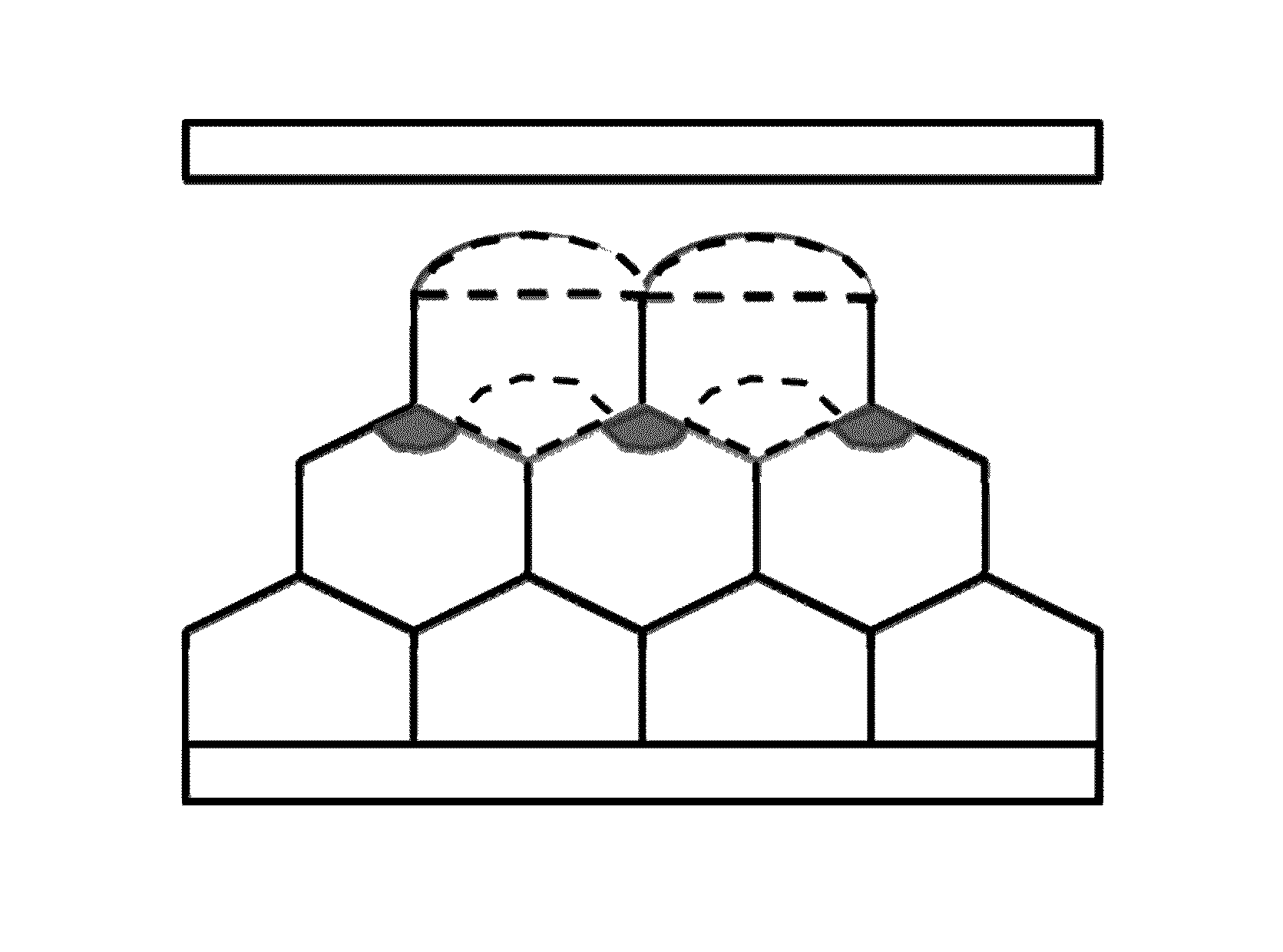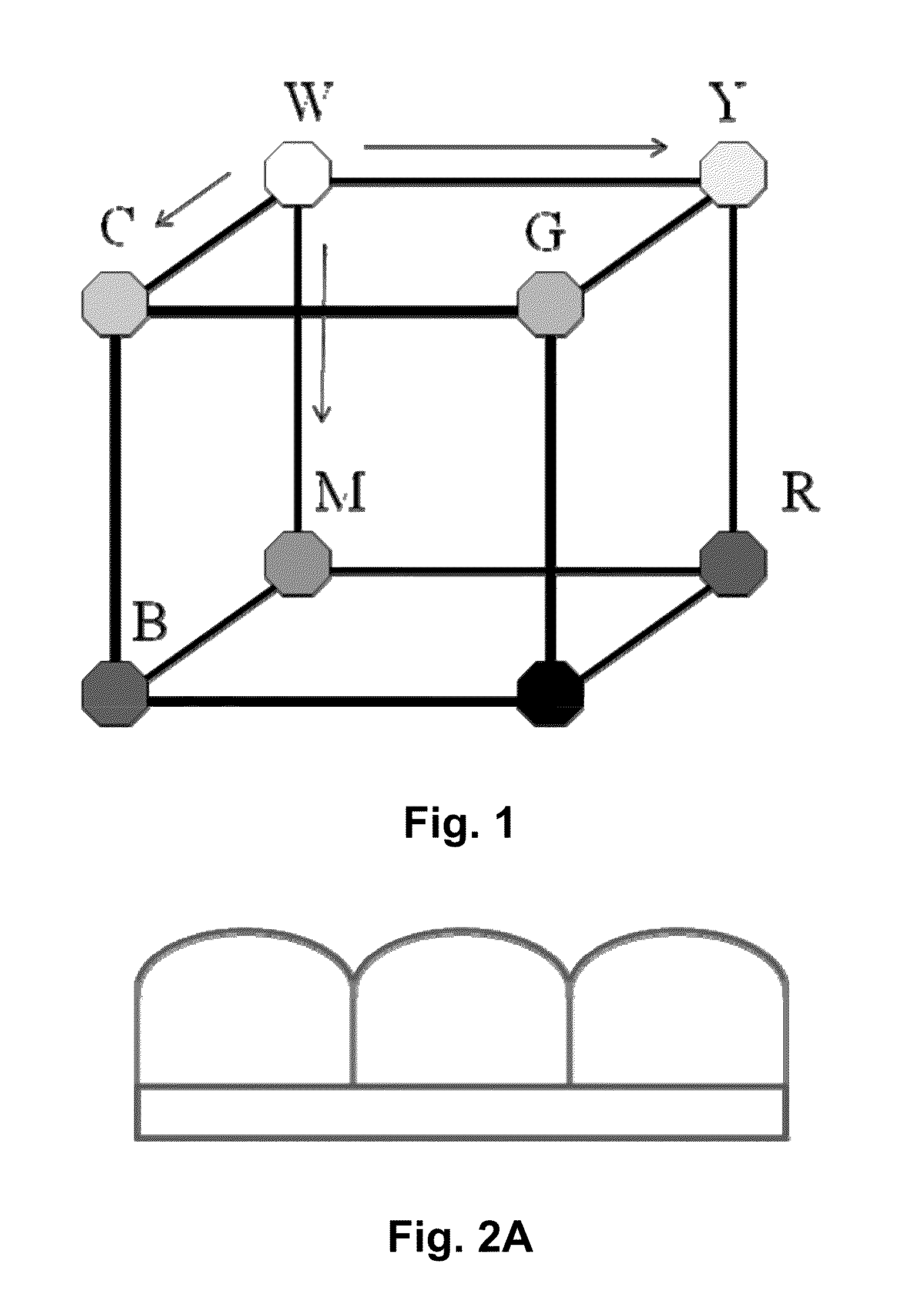Multi-color electro-optic displays
a technology of electrooptic displays and electrooptic media, applied in the field of multi-color electrooptic media, can solve the problems of inadequate service life of these displays, unable to meet the needs of users, and gas-based electrophoretic media are susceptible to the same types of problems, so as to achieve low viscosity fluid, reduce haze dispersion, and increase absorption
- Summary
- Abstract
- Description
- Claims
- Application Information
AI Technical Summary
Benefits of technology
Problems solved by technology
Method used
Image
Examples
example 1
First Medium Containing Red, Green and Blue Pigments
[0137]The pigments used in this Example were:[0138]Clariant Hostaperm Pink E 02, a red quinacridone pigment (available commercially from Clariant Corporation, 4000 Monroe Road, Charlotte N.C. 28205), stated by the manufacturer to have a specific gravity of 1.45, a surface area of 77 m2 / g, and an average particle size of 90 nm;[0139]Clariant Hostaperm Green GNX, a green copper phthalocyanine pigment from the same manufacturer, and stated by the manufacturer to have a specific gravity of 2.05, a surface area of 40 m2 / g, and an average particle size of 50 nm; and[0140]Clariant Hostaperm Blue B2G-D, a blue copper phthalocyanine pigment from the same manufacturer, and stated by the manufacturer to have a specific gravity of 1.6, a surface area of 44 m2 / g, and an average particle size of 75 nm.
[0141]Millbases of each pigment containing approximately 20 percent by weight of the pigment in d-limonene and 0.0044 g of Solsperse 17000 per squ...
example 2
Second Medium Containing Red, Green and Blue Pigments
[0143]Example 1 was repeated except that Clariant Ink Jet Magenta E02 VP 2621, a quinacridone pigment having an average particle size of 70 nm, was substituted for the pink pigment used in Example 1. Again, the millbases were also blended to produce a mixed dispersion having a color as close to black as possible. The results are shown in Table 2 below.
[0144]
TABLE 2Color (saturated)L*a*b*% R% G% BRed39.645.6−17.610000Green21.110.1−28.501000Blue22.222.6−17.600100Black31.00−16.947.4052.6
Again, the blended “black” tended to green, and since a suitable alternative blue pigment could not be located, it was determined that a major change in the pigment set was necessary.
example 3
Medium Containing Green, Violet and Yellow Pigments
[0145]Example 1 was repeated except that the pink and blue pigments were replaced with Clariant Hostaperm Violet RL02 and Clariant Novoperm Yellow 4G VP2532 from the same manufacturer. The former is a dioxazine pigment stated by the manufacturer to have a specific gravity of 1.49, a surface area of 80 m2 / g, and an average particle size of 50 nm, while the latter is a disazo pigment stated by the manufacturer to have a specific gravity of 1.44, a surface area of 33 m2 / g, and an average particle size of 162 nm. Again, the millbases were also blended to produce a mixed dispersion having a color as close to black as possible. The results are shown in Table 3 below.
[0146]
TABLE 3Color (saturated)L*a*b*% G% P% YGreen21.110.1−28.510000Purple30.44.220.801000Yellow46.2−2.785.200100Black31.00057.822.919.3
As may be seen from Table 3, the blend of this set of pigments produces a good, neutral black.
[0147]A polymer-dispersed electrophoretic mediu...
PUM
| Property | Measurement | Unit |
|---|---|---|
| optical densities | aaaaa | aaaaa |
| diameter | aaaaa | aaaaa |
| tetrahedral angle | aaaaa | aaaaa |
Abstract
Description
Claims
Application Information
 Login to View More
Login to View More - R&D
- Intellectual Property
- Life Sciences
- Materials
- Tech Scout
- Unparalleled Data Quality
- Higher Quality Content
- 60% Fewer Hallucinations
Browse by: Latest US Patents, China's latest patents, Technical Efficacy Thesaurus, Application Domain, Technology Topic, Popular Technical Reports.
© 2025 PatSnap. All rights reserved.Legal|Privacy policy|Modern Slavery Act Transparency Statement|Sitemap|About US| Contact US: help@patsnap.com



